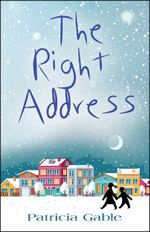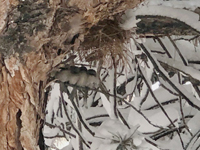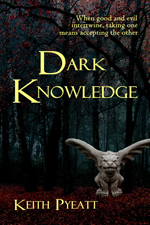Patricia Gable and Linda Wilson are former teachers who now write middle grade and children’s books, respectively. These members of SouthWest Writers (SWW) each had at least one new release within the last year and have an interview posted on the SWW website.
Patricia Gable has authored essays, memoirs, children’s stories, and educational articles. In 2021, she published the first in her middle grade Right Series, The Right Address. Her latest release is The Right Choice, book two in that series. Visit Patricia’s author pages on Amazon and SouthWestWriters.com. For more about her work, read her 2022 SWW interview.
 What would you like readers to know about the story you tell in The Right Choice?
What would you like readers to know about the story you tell in The Right Choice?
When writing this series, I wanted to feature good characters that relate to the reader. They have problems along the way, but they are resilient. Strong friendships develop, and they support each other. Also, they have no devices to distract them. Set in the early 1980s, readers will learn some things that are different from the world today.
Annie and Willie, introduced in The Right Address, return in the second book along with a new character. Tell us about your main characters and why a middle grade audience will care about them and their plight.
Christopher is a new character in the second book of the series, The Right Choice. He is a talented basketball player, the youngest and best player on the high school varsity team. When his dad is deployed to the Middle East, he and his mother move to a small town to live with his grandmother, a woman with wise advice. He is allowed to continue playing at the high school for the current season. A college recruiter comes to watch the boys play and he sets his sights on Christopher. But when misfortune strikes, will Christopher ever realize his dream?
Annie and Christopher do not get along at all in the beginning. When six-year-old Willie gets hurt, Christopher takes care of him. Annie sees that Christopher is not as bad as she thought.
 When did you know the characters were strong enough for a series?
When did you know the characters were strong enough for a series?
In 2005 I entered a short story contest with two homeless children, Willie and Annie, as characters and was awarded Honorable Mention. The story kept nudging me in the back of my mind. When my sister and I took a novel writing course, I used the story as a springboard to write the first book. Then I just couldn’t put the characters away!
Do you have a message or a theme that recurs in your writing?
My message is for middle graders to not give up on their dreams. If you have an obstacle in the way, take another path but always move forward.
What is the greatest challenge of writing for the middle grade market?
Middle grade readers are a wonderful audience. My personal challenge is making my books and stories exciting, funny, and inspiring to readers.
What projects are you working on now?
I’m working on the third book in the series, featuring the kids from the two previous books. When a winter storm closes school, the friends hang out at Christopher’s house. After board games and television, they decide to play hide-and seek. Willie hides in the basement and discovers an underground tunnel built during prohibition. What will he discover?
Linda Wilson is the author of the Abi Wunder Mystery series and other books for children. Her two newest releases are Waddles the Duck: Hey, Wait for Me! (2022) and Cradle in the Wild: A Book for Nature Lovers Everywhere (2023). You’ll find Linda on her Amazon author page, on her website at LindaWilsonAuthor.com, and on Facebook. Visit the Writers on the Move blog where she’s a contributing author. And read more about her writing in SWW’s 2021 interview.
 Waddles the Duck was inspired by a family of mallards that came to live in your swimming pool. Did you also have a personal experience that inspired Cradle in the Wild?
Waddles the Duck was inspired by a family of mallards that came to live in your swimming pool. Did you also have a personal experience that inspired Cradle in the Wild?
My picture book, Cradle in the Wild, was inspired by an idea I found in a craft book that I used when my two daughters were in grade school. The idea is to gather natural materials that birds use to build their nests, such as dried leaves, grass, bird feathers, soft parts of weeds and flowers, small pieces of bark — virtually any type of materials birds might find in the wild. In the spring, we would scatter these natural materials on the grass and watch for the birds to discover them and carry them away. The birds didn’t always discover our materials. I remembered how disappointed we were when they didn’t find our contributions to their nests. The two young sisters in the story were disappointed, too, when the birds didn’t come. So, they brainstormed about what they could use to attract the birds. I love to sew and especially love colorful fabric and sewing incidentals. My collection of ribbon, yarn and lace gave me the idea of adding these colorful snippets to the natural nesting materials, and the story was born.
What topics does Waddles the Duck and Cradle in the Wild touch upon that would make them a perfect fit for the classroom?
Waddles: The main message I want readers to come away with is to realize that feeding waterfowl foods that are nutritious for them (such as waterfowl pellets available at pet stores, dandelions, wheatgrass, chopped lettuce leaves, and cracked corn) are far better for them than feeding waterfowl bread. The boy in the story must discover a solution to finding a good home for a mallard duck family that has taken up residence in the family pool. He realizes that the ducks wouldn’t survive for long due to the chemicals in the pool and the lack of natural food that ducks ordinarily find in their natural habitat. I’ve purchased little rubber ducks and plan to have them float in a tub filled with water to demonstrate to students what happens in the story.

Pygmy nuthatches, March 2021, gather to wait out a storm and eat the thistle in Linda’s bird feeder.
Cradle: I’ve presented a program for Cradle that has worked well with students and adults a number of times now. I begin by passing around a collection of about ten bird’s nests that I’ve gathered over the years and discussing birds while the students are feeling the nesting materials, especially the soft fuzzy insides that birds use for protection of their eggs and hatchlings. I show the adults a terrific book — Bird Watch Book for Kids: Introduction to Bird Watching, Colorful Guide to 25 Backyard Birds, and Journal Pages, Dylanna Press, 2022 (Amazon) — which suggests taking water, sunscreen, etc. on bird-watching trips with their children. The book encourages children to keep track of the birds they see in the book’s journal pages. I show the parents a bird guide for adults to keep on hand and tell them about bird-sound apps they can save on their phones. I either read or tell the Cradle story, then give them a craft I’ve put together in a Ziplock bag for them to make a bird nest of their own at home.
Tell us about the journey to choose the evocative and poetic title for Cradle in the Wild.
Creating the title Cradle in the Wild was just one of those inspirations that came to me one day. Many times I write title ideas in a notebook over many days and weeks. Sometimes nothing works. Then if I’m lucky the aha moment arrives and I’ve got my title.
You released two books in less than one year. How did you accomplish this?
I have to chuckle at this question because, though these book ideas marinated for quite some time before they made it to the page, I wrote both books during COVID when we were all stuck at home. While doing that, I thought I needed a special COVID project, too, so I erected a bird feeder close to my kitchen window. So, while writing the books I enjoyed watching many kinds of birds frequenting my feeders.
 In your last interview for SouthWest Writers, you shared what you wish you’d known when you began your writing/publishing career. What did you learn from publishing Waddles the Duck and Cradle in the Wild?
In your last interview for SouthWest Writers, you shared what you wish you’d known when you began your writing/publishing career. What did you learn from publishing Waddles the Duck and Cradle in the Wild?
I learned something about marketing from writing these two books. As a self-published author, for a few years I tried to make sales by placing ads on my social media, I wrote blog articles, I became the newsletter editor for the Society of Children’s Book Writers and Illustrators (SCBWI), and more. Though I enjoyed doing all of that, I made very few sales. Once I accumulated the five books that I’ve published (a chapter book and four picture books), I began selling at book fairs. It’s a lot of work, but I started meeting readers and selling books. Since I don’t have a publisher backing me up and helping to distribute my books, I’ve decided my biggest reward is coming from meeting local readers. This is how I plan to spend my time from now on — sharing my stories with parents, grandparents, and their children in venues where they can also purchase my books.
What writing projects are you working on now?
Sometime in 2023, I’m hoping to finish the second book in my chapter book trilogy, Secret in the Mist: An Abi Wunder Mystery, which is a ghost/mystery story. I’m also working on creating a new Tall Boots book which will be a side-by-side Spanish/English bilingual book, and after that making my other picture books bilingual. And for a new project, I want to write a book about turtles/tortoises. The working name of my character is Twiddles.
 KL Wagoner (writing as Cate Macabe) is the author of This New Mountain: a memoir of AJ Jackson, private investigator, repossessor, and grandmother. Kat has a speculative fiction blog at klwagoner.com and writes about memoir at ThisNewMountain.com.
KL Wagoner (writing as Cate Macabe) is the author of This New Mountain: a memoir of AJ Jackson, private investigator, repossessor, and grandmother. Kat has a speculative fiction blog at klwagoner.com and writes about memoir at ThisNewMountain.com.



